Vous êtes ici : Accueil › Long-term bare fallow experiments offer new opportunities for the study of stable carbon in soil
Long-term bare fallow experiments offer new opportunities for the study of stable carbon in soil
The stability of soil carbon is a major source of uncertainty for the prediction of atmo-spheric CO2concentration during the 21st century. Isolating experimentally the stablesoil carbon from other, more vulnerable, pools is of prime importance for calibratingsoil C models, and gaining insights on the mechanisms leading to soil organic carbon5(SOC) stability. Long-term bare fallow experiments, in which the decay of SOC is mon-itored for decades after inputs from plant material have stopped, represent a uniqueopportunity to assess the stable organic carbon. We synthesized data from 6 barefallow experiments of long-duration, covering a range of soil types and climate condi-tions, at Askov (Denmark), Grignon and Versailles (France), Kursk (Russia), Rotham-10sted (UK), and Ultuna (Sweden). The conceptual model of SOC being divided intothree pools with increasing turnover times, a labile pool (∼years), an intermediate pool(∼decades) and a stable pool (∼several centuries or more) fits well with the long termSOC decays observed in bare fallow soils. The modeled stable pool estimates rangedfrom 2.7gC kg-1at Rothamsted to 6.8gC kg-1at Grignon. The uncertainty over the15identification of the stable pool is large due to the short length of the fallow recordsrelative to the time scales involved in the decay of soil C. At Versailles, where there isleast uncertainty associated with the determination of a stable pool, the soil containspredominantly stable C after 80 years of continuous bare fallow. Such a site representsa unique research platform for future experimentation addressing the characteristics of20stable SOC and its vulnerability to global change.
Barré, P., Eglin, T., Christensen, B. T., Ciais, P., Houot, S., Kätterer, T., ... & Chenu, C. (2010). Long-term bare fallow experiments offer new opportunities for the quantification and the study of stable carbon in soil. Biogeosciences Discussions, 7(3), 4887.







